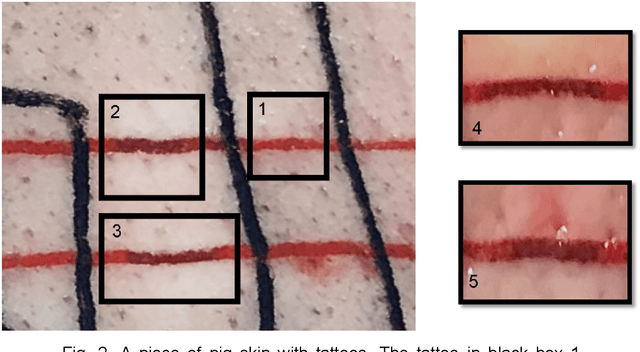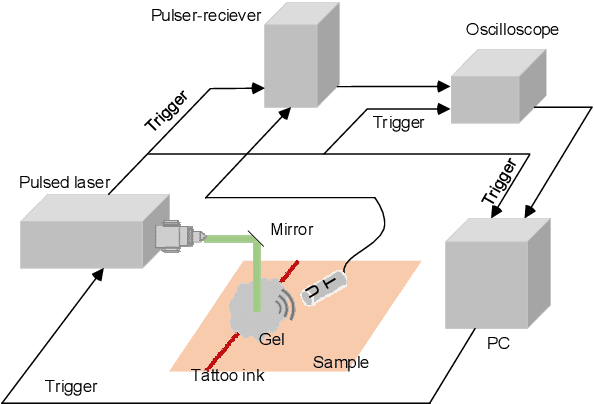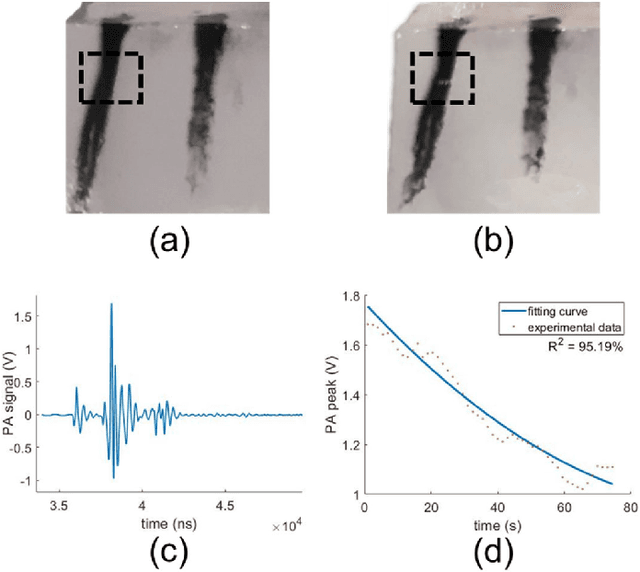Daohuai Jiang
Hardware Architecture Design of Model-Based Image Reconstruction Towards Palm-size Photoacoustic Tomography
Aug 12, 2024



Abstract:Photoacoustic (PA) imaging technology combines the advantages of optical imaging and ultrasound imaging, showing great potential in biomedical applications. Many preclinical studies and clinical applications urgently require fast, high-quality, low-cost and portable imaging system. Translating advanced image reconstruction algorithms into hardware implementations is highly desired. However, existing iterative PA image reconstructions, although exhibit higher accuracy than delay-and-sum algorithm, suffer from high computational cost. In this paper, we introduce a model-based hardware acceleration architecture based on superposed Wave (s-Wave) for palm-size PA tomography (palm-PAT), aiming at enhancing both the speed and performance of image reconstruction at a much lower system cost. To achieve this, we propose an innovative data reuse method that significantly reduces hardware storage resource consumption. We conducted experiments by FPGA implementation of the algorithm, using both phantoms and in vivo human finger data to verify the feasibility of the proposed method. The results demonstrate that our proposed architecture can substantially reduce system cost while maintaining high imaging performance. The hardware-accelerated implementation of the model-based algorithm achieves a speedup of up to approximately 270 times compared to the CPU, while the corresponding energy efficiency ratio is improved by more than 2700 times.
Review of photoacoustic imaging plus X
Sep 06, 2023Abstract:Photoacoustic imaging (PAI) is a novel modality in biomedical imaging technology that combines the rich optical contrast with the deep penetration of ultrasound. To date, PAI technology has found applications in various biomedical fields. In this review, we present an overview of the emerging research frontiers on PAI plus other advanced technologies, named as PAI plus X, which includes but not limited to PAI plus treatment, PAI plus new circuits design, PAI plus accurate positioning system, PAI plus fast scanning systems, PAI plus novel ultrasound sensors, PAI plus advanced laser sources, PAI plus deep learning, and PAI plus other imaging modalities. We will discuss each technology's current state, technical advantages, and prospects for application, reported mostly in recent three years. Lastly, we discuss and summarize the challenges and potential future work in PAI plus X area.
Photoacoustic-monitored laser treatment for tattoo removal: a feasibility study
May 26, 2021



Abstract:Skin blemishes and diseases have attracted increasing research interest in recent decades, due to their growing frequency of occurrence and the severity of related diseases. Various laser treatment approaches have been introduced for the alleviation and removal of skin pigmentation. The treatments' effects highly depend on the experience and prognosis of the relevant operators. But, the operation process lacks real-time feedback, which may directly reflect the extent of the treatment. In this manuscript, we report a photoacoustic-guided laser treatment method with a feasibility study, specifically for laser treatment targeting the tattoo's removal. The results well validated the feasibility of the proposed method through the experiments on phantoms and ex vivo pig skin samples.
Y-Net: A Hybrid Deep Learning Reconstruction Framework for Photoacoustic Imaging in vivo
Aug 02, 2019



Abstract:Photoacoustic imaging (PAI) is an emerging non-invasive imaging modality combining the advantages of deep ultrasound penetration and high optical contrast. Image reconstruction is an essential topic in PAI, which is unfortunately an ill-posed problem due to the complex and unknown optical/acoustic parameters in tissue. Conventional algorithms used in PAI (e.g., delay-and-sum) provide a fast solution while many artifacts remain, especially for linear array probe with limited-view issue. Convolutional neural network (CNN) has shown state-of-the-art results in computer vision, and more and more work based on CNN has been studied in medical image processing recently. In this paper, we present a non-iterative scheme filling the gap between existing direct-processing and post-processing methods, and propose a new framework Y-Net: a CNN architecture to reconstruct the PA image by optimizing both raw data and beamformed images once. The network connected two encoders with one decoder path, which optimally utilizes more information from raw data and beamformed image. The results of the test set showed good performance compared with conventional reconstruction algorithms and other deep learning methods. Our method is also validated with experiments both in-vitro and in vivo, which still performs better than other existing methods. The proposed Y-Net architecture also has high potential in medical image reconstruction for other imaging modalities beyond PAI.
 Add to Chrome
Add to Chrome Add to Firefox
Add to Firefox Add to Edge
Add to Edge